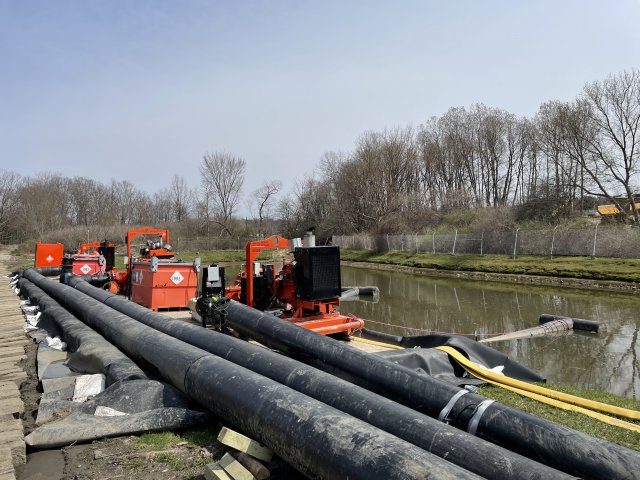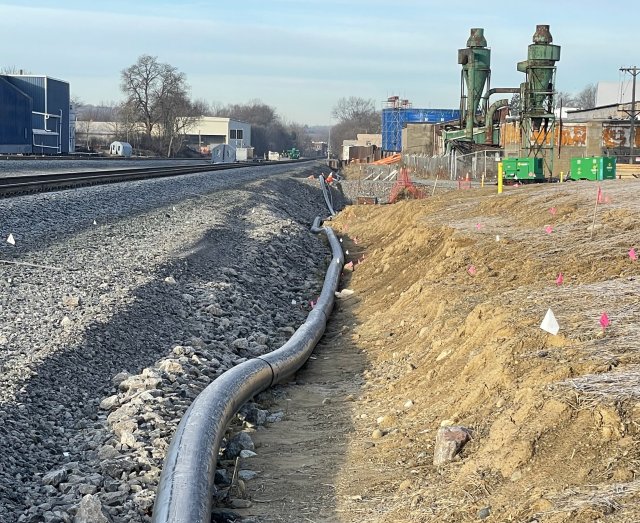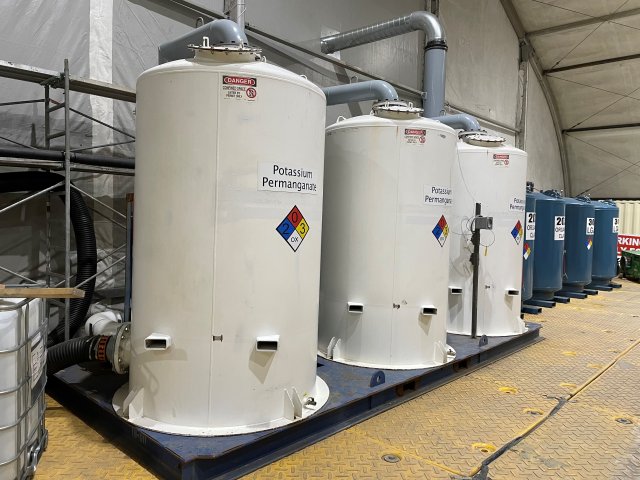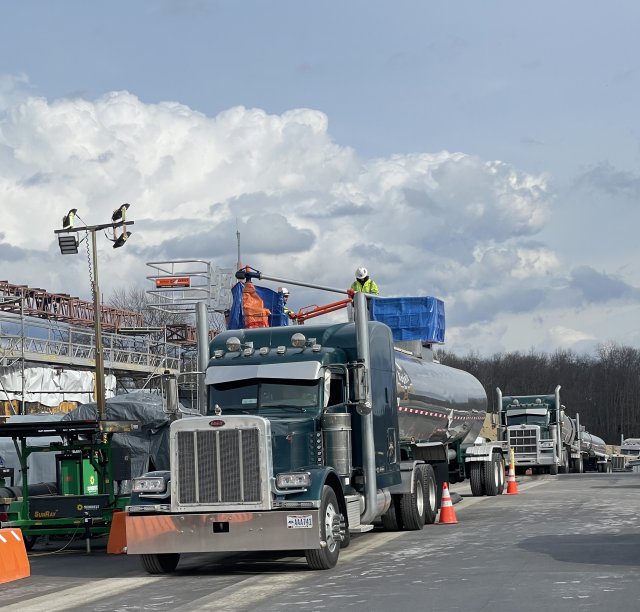Water Management Update
Returning Natural Water Flow to Sulphur Run
Waste Management and Disposal
Status of Additional Cleanup in Sulphur and Leslie Run
Frequently Asked Questions
Additional Information

As the cleanup at the derailment site continues to progress, water management in the area will undergo some changes. In the next few months, the natural flow of creek water to Sulphur Run will be restored, rainwater and snow melt will no longer need to be collected at the site, and additional cleanup efforts will begin in Leslie and Sulphur Runs. Moving forward, these changes are based on extensive sampling and monitoring data, including confirmatory on-site sampling which acts as a “double-check” to ensure all contamination from the derailment has been removed.
The changes to water management are critical steps to reduce the footprint of the response area, and necessary for completion of the remedial and investigation activities. Until the temporary storage tanks are no longer needed for rainwater and snow melt collection, the double-check work in those areas cannot be completed.
Returning Natural Water Flow to Sulphur Run

The project is approaching an important milestone toward returning the natural flow of water back into Sulphur Run. To prepare for rainwater and water from the upstream wetlands to flow naturally on-site, the north and south ditches alongside the tracks will be evaluated in areas, starting at the western-most end of the derailment site. Robust testing under EPA and Ohio EPA guidance, oversight, and approval will ensure the soils around and within the ditches have no remaining contamination.
Once testing in one area of the ditch shows naturally flowing water is safe to enter Sulphur Run, flow will be restored for that area. The testing process will be repeated area-by-area until the full natural flow of water is restored. Surface water testing in Sulphur and Leslie Runs will continue through this process. None of this water flow will come from currently contained site water.
Rainwater and snowmelt will continue to be collected on-site until water is fully restored to the ditches. If any areas need additional work, they will not be part of the process to restore water flow. Additionally, it is important to note that there likely will not be a visible water level difference once water flow is restored. Water in the North Ditch will increase creek flow by approximately 1% and the South Ditch will increase creek flow by approximately 3%. This process will begin to occur in the next two-to-four weeks, with the overall process extending into the summer. EPA’s website (see first page) will be updated with operational information accordingly.
Wastewater Management and Disposal

Throughout the response, rainwater and snowmelt that have touched potentially contaminated soil areas were collected and put into storage tanks. Initially, this water was then shipped to off-site regulated disposal facilities as hazardous waste. Following construction of the on-site wastewater treatment plant most water collected has been sent through the treatment system before being shipped off-site as non-hazardous waste.
Now that contaminated soils are removed and much of the double-check work is complete, untreated collected water can be disposed of as non-hazardous if it is confirmed to not contain vinyl chloride and other hazardous materials. This represents great progress and is a significant step towards final site restoration, reflecting how successful the removal of contamination has been. Until final preparations for this are in place, wastewater will continue to be treated before off-site disposal. During heavy rain events, some wastewater may be shipped off-site as hazardous (without being treated) to maintain storage capacity. Any trucks carrying hazardous wastewater are properly labeled and sent to regulated facilities for disposal.
Status of Additional Cleanup in Sulphur and Leslie Runs

Ecological conditions in the streams are improving, and since completing soil excavation work in October 2023, Norfolk Southern has comprehensively investigated Sulphur and Leslie Runs for any remaining derailment impacts. While the results of those assessments indicate that surface water and air in and around the waterways do not show derailment-related contamination, areas of oil sheening were identified in both streams. To address these areas, Norfolk Southern has submitted a sediment mitigation workplan to EPA for approval as the final step in returning the waterways to their pre-derailment conditions. When the weather warms up in the spring, Norfolk Southern will start the work to target and remove oil discharged during the derailment, including additional stream/sediment washing and physical removal of sediments, as appropriate. This cleanup will be overseen by EPA and Ohio EPA.
Frequently Asked Questions
For Additional Information
If you have questions that have not been answered in the FAQ, please contact:
EPA Information Line: 330-775-6517
EPA Welcome Center: 25 North Market Street, East Palestine (Hours by appointment only)
Email: R5_eastpalestine@epa.gov
Learn More
To learn more about the cleanup work being done, please visit:
EPA Information Repository
Memorial Public Library
309 North Market Street, East Palestine
(Hours: Mon-Th. 9 a.m. - 8 p.m. & Fri-Sat. 9 a.m. - 5 p.m.)
Print friendly version of this factsheet: Water Management Update (pdf)
